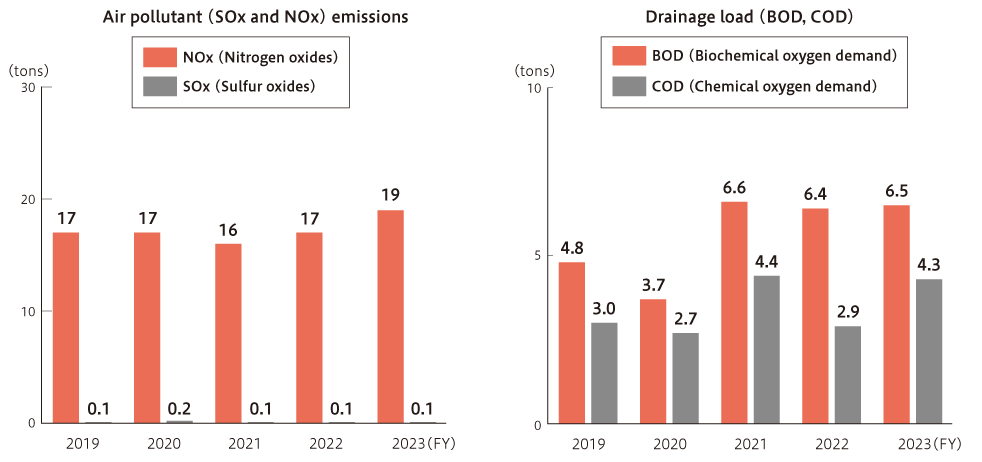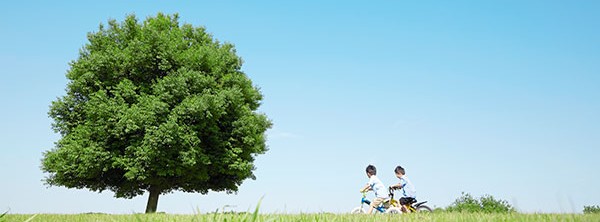Pollution Prevention
Pollution Prevention Initiatives
Prevention of air, water, and soil pollution
To prevent air pollution, SHIONOGI strictly observes the regulatory values for NOx, SOx, and particulate matter. In FY2014, we completed a fuel conversion from heavy oil, which contains many impurities, to liquefied natural gas at the Kanegasaki Plant, thus achieving a significant reduction in SOx emissions. Moreover, to prevent contamination in sewers and public waters by wastewater, we set voluntary criteria for pollutants, which are stricter than those imposed by related laws and regulations, and carry out round-the-clock monitoring of wastewater with the use of TOC*1 meters and oil content monitoring devices. In particular, at the Kanegasaki Plant, the Tokushima Plant, and the Aburahi Research Center, where wastewater is released into rivers—which are public waters—from operating sites, wastewater is treated and purified at the facilities before it is released into nearby rivers.
The Kanegasaki Plant, which uses large quantities of chemical substances, sets voluntary criteria for soil pollution and takes periodic measurements. It has been confirmed that the measurements are consistently below the applicable environmental standard values.

Compliance with related laws and regulations
Environment-related laws and regulations cover a wide range of issues, including waste and energy management, the prevention of air and water pollution, and the management of chemical substances. To ensure thorough compliance, we share information on legal and regulatory revisions with each operating site, organize educational programs, and compile relevant information and knowledge in manuals. We also conduct a periodic assessment of the status of legal and regulatory compliance. As with environmental matters, we also ensure legal and regulatory compliance and assessment with regard to health and safety.
As a result of promoting these initiatives SHIONOGI has not been subject to any litigation or penalties for EHS-related violations to date.
Number of incidents of excess emissions (exceeding legal restrictions) (cases)
| FY | 2019 | 2020 | 2021 | 2022 | 2023 |
|---|---|---|---|---|---|
| Shionogi & Co., Ltd. | 0 | 0 | 0 | 0 | 0 |
| Group companies | 0 | 1 | 0 | 0 | 0 |
Number of complaints relating to the environment (cases)
| FY | 2019 | 2020 | 2021 | 2022 | 2023 |
|---|---|---|---|---|---|
| Shionogi & Co., Ltd. | 0 | 0 | 2 | 1 | 0 |
| Group companies | 0 | 0 | 1 | 0 | 0 |

